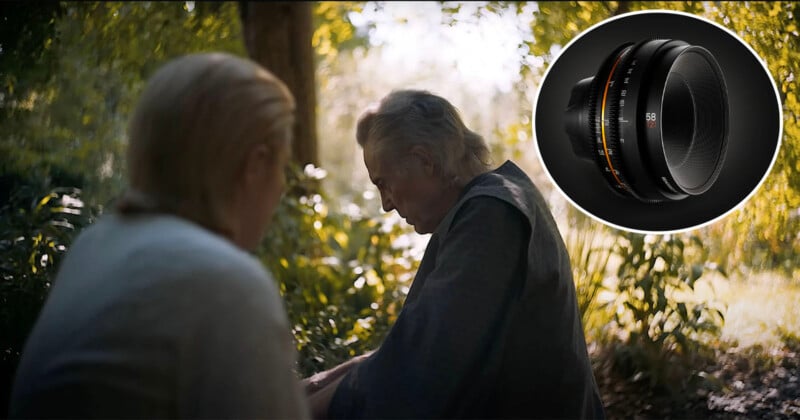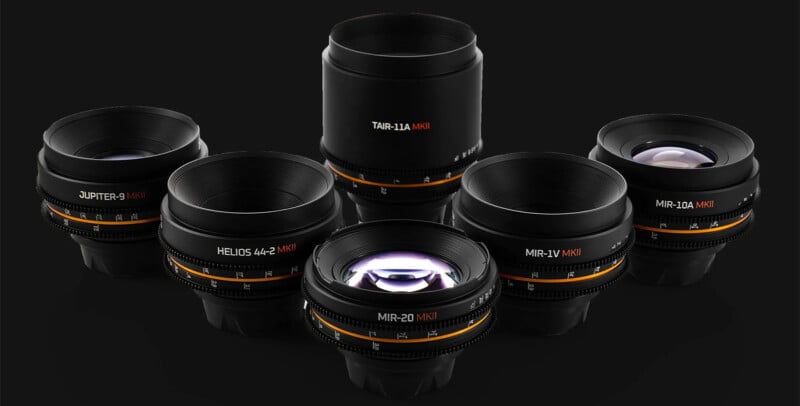
The biggest movie of 2024, Dune: Part Two, was shot using the latest and greatest cameras and lenses — plus some vintage Soviet-era lenses.
Dune: Part Two, the eagerly anticipated follow-up to 2021’s Dune, collected $182.5 million in its opening weekend. The film’s appeal goes far beyond fans of Frank Herbert’s novels, largely thanks to its star-studded cast and the impeccable work of cinematographer Greig Fraser. Dune: Part Two is a visual spectacle.
Among the most notable vintage lenses used to film Dune: Part Two is a Helios 44, a Russian-made clone of the famed Zeiss Biotar. With its distinctive 13-blade aperture diaphragm, the Helios 44, a 58mm f/2 prime lens, delivers unique and incredible bokeh.
“Wide open, it’s by far the softest lens I’ve ever owned — it has significant vignetting, terrible sunstars, and the corners are nothing to write home about. However, regardless of its downsides, it has quickly become my all-time favorite lens,” Mark O. wrote for PetaPixel in 2020.
If this lens is so soft, how was it used to shoot what could be the highest-grossing film of 2024?
Arri Rental explains that Fraser elected to shoot Dune: Part Two entirely with spherical — not anamorphic — lenses. Working directly with Arri Rental, Fraser selected some remarkable lenses from the famed camera and lens maker.
“I worked closely with Christoph Hoffsten at Arri Rental in Germany to tune and detune optics. The Moviecams were pleasing and had good depth, as well as a really good range to choose from. They helped create the texture I wanted, and the Soviet glass was especially well suited to what we were doing; we used them all in harmony, effectively,” Fraser explains.
The award-winning cinematographer cites the resolution and fidelity of Arri’s largest Alexa image sensors as an occasional problem rather than a universal benefit, saying that “we needed to dirty the image up a bit.”
Dune unit photographer Chiabella James told PetaPixel last year that Fraser has a rich background in stills photography, which James said helped her create a strong bond with the cinematographer and led to a lot of fantastic photography conversation on set.

According to Kosmo Foto, the Soviet lenses Fraser used came from Ukrainian company IronGlass Adapters. This outfit converts old Soviet lenses, like the Helios 44, Mir-20, Mir-1, and Jupiter-9 85mm portrait prime, for use on modern camera systems.
“The development of this body and the mechanics began in 2021, in early 2022, the next prototypes were produced, and then there was war… Despite the difficult times, the team continued to work, some on the ground, some remotely from the trenches. Really glad we got the pre series irons done for Greig Fraser in time and he took full advantage of them on the Dune set,” IronGlass Adapters’ Kostiantyn Harkavyi wrote on Facebook last weekend.
“It pleases me that among thousands of other variants, the MKll from IronGlass was chosen, that they did a great job without complaining about the mechanics and optical composition, that even in difficult times in a war country we can make a world-class quality product and be involved in bright movie events. So we continue to work hard so you can enjoy a brilliant movie.”
Arri’s Alex 65 camera system may be too sharp for Fraser’s taste in some cases, but the large format cinematic camera system also opens up many creative possibilities for lenses.
“What I love about 65 mm is that it removes restrictions for me, opening up so many more lens options. You can work with lenses originally designed for smaller formats, where you see parts of the glass that were never intended to be seen. For me, seeing and feeling those hidden parts is an eye-opener, literally and figuratively. It helps me dirty up the image and give it texture in ways you couldn’t do with a smaller format,” Fraser explains.
Image credits: Warner Bros. Pictures
